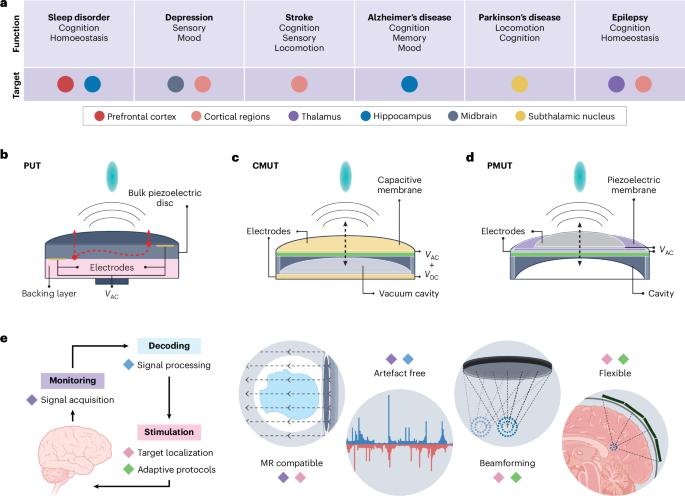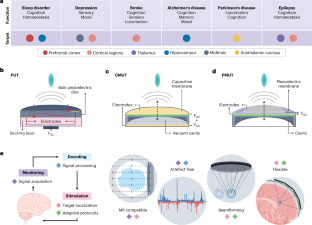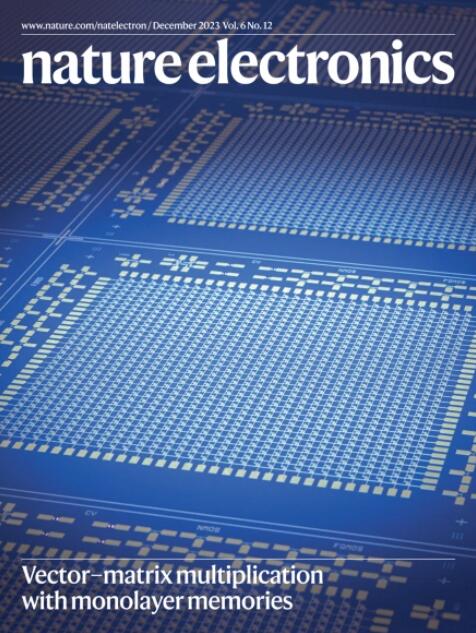靶向治疗的超声脑刺激技术
IF 40.9
1区 工程技术
Q1 ENGINEERING, ELECTRICAL & ELECTRONIC
引用次数: 0
摘要
低强度聚焦超声是一种新兴的技术,可以精确和无创地调节神经元活动和治疗脑部疾病。超声脑刺激技术的最新发展已经改善了与现有生物监测系统的整合,反过来,一系列探索性研究,使低强度聚焦超声更接近临床实践。在这里,我们检查超声刺激技术的发展靶向治疗。我们探索微机械和压电超声换能器及其与生理读出技术的系统级集成。我们考虑了超声刺激平台的空间分辨率、光束转向、成像兼容性、颅骨补偿技术和闭环算法。我们还提供了一个指南,开发超声刺激系统的具体治疗应用。最后,我们探讨了为广泛的临床前和临床研究开发超声换能器技术和平台所面临的技术挑战。本文章由计算机程序翻译,如有差异,请以英文原文为准。


Ultrasound brain stimulation technologies for targeted therapeutics
Low-intensity focused ultrasound is an emerging technique that can precisely and non-invasively modulate neuronal activity and treat brain disorders. Recent developments in ultrasound brain stimulation technologies have led to improved integration with existing biological monitoring systems and, in turn, a range of exploratory studies, moving low-intensity focused ultrasound closer to clinical practice. Here, we examine the development of ultrasound stimulation technologies for targeted therapeutics. We explore micromachined and piezoelectric ultrasound transducers and their system-level integration with physiological readout techniques. We consider the spatial resolution, beam steering, imaging compatibility, skull compensation technologies and closed-loop algorithms of ultrasound stimulation platforms. We also provide a guide for developing an ultrasound stimulation system for specific therapeutic applications. Finally, we explore the technical challenges that remain to be addressed to develop ultrasound transducer technologies and platforms for widespread preclinical and clinical studies. This Review examines the development of ultrasound brain stimulation technologies, from the design of individual transducers to systems that combine ultrasound stimulation with biological monitoring for adaptive closed-loop modulation, as well as future developments needed for safe clinical adoption.
求助全文
通过发布文献求助,成功后即可免费获取论文全文。
去求助
来源期刊

Nature Electronics
Engineering-Electrical and Electronic Engineering
CiteScore
47.50
自引率
2.30%
发文量
159
期刊介绍:
Nature Electronics is a comprehensive journal that publishes both fundamental and applied research in the field of electronics. It encompasses a wide range of topics, including the study of new phenomena and devices, the design and construction of electronic circuits, and the practical applications of electronics. In addition, the journal explores the commercial and industrial aspects of electronics research.
The primary focus of Nature Electronics is on the development of technology and its potential impact on society. The journal incorporates the contributions of scientists, engineers, and industry professionals, offering a platform for their research findings. Moreover, Nature Electronics provides insightful commentary, thorough reviews, and analysis of the key issues that shape the field, as well as the technologies that are reshaping society.
Like all journals within the prestigious Nature brand, Nature Electronics upholds the highest standards of quality. It maintains a dedicated team of professional editors and follows a fair and rigorous peer-review process. The journal also ensures impeccable copy-editing and production, enabling swift publication. Additionally, Nature Electronics prides itself on its editorial independence, ensuring unbiased and impartial reporting.
In summary, Nature Electronics is a leading journal that publishes cutting-edge research in electronics. With its multidisciplinary approach and commitment to excellence, the journal serves as a valuable resource for scientists, engineers, and industry professionals seeking to stay at the forefront of advancements in the field.
 求助内容:
求助内容: 应助结果提醒方式:
应助结果提醒方式:


